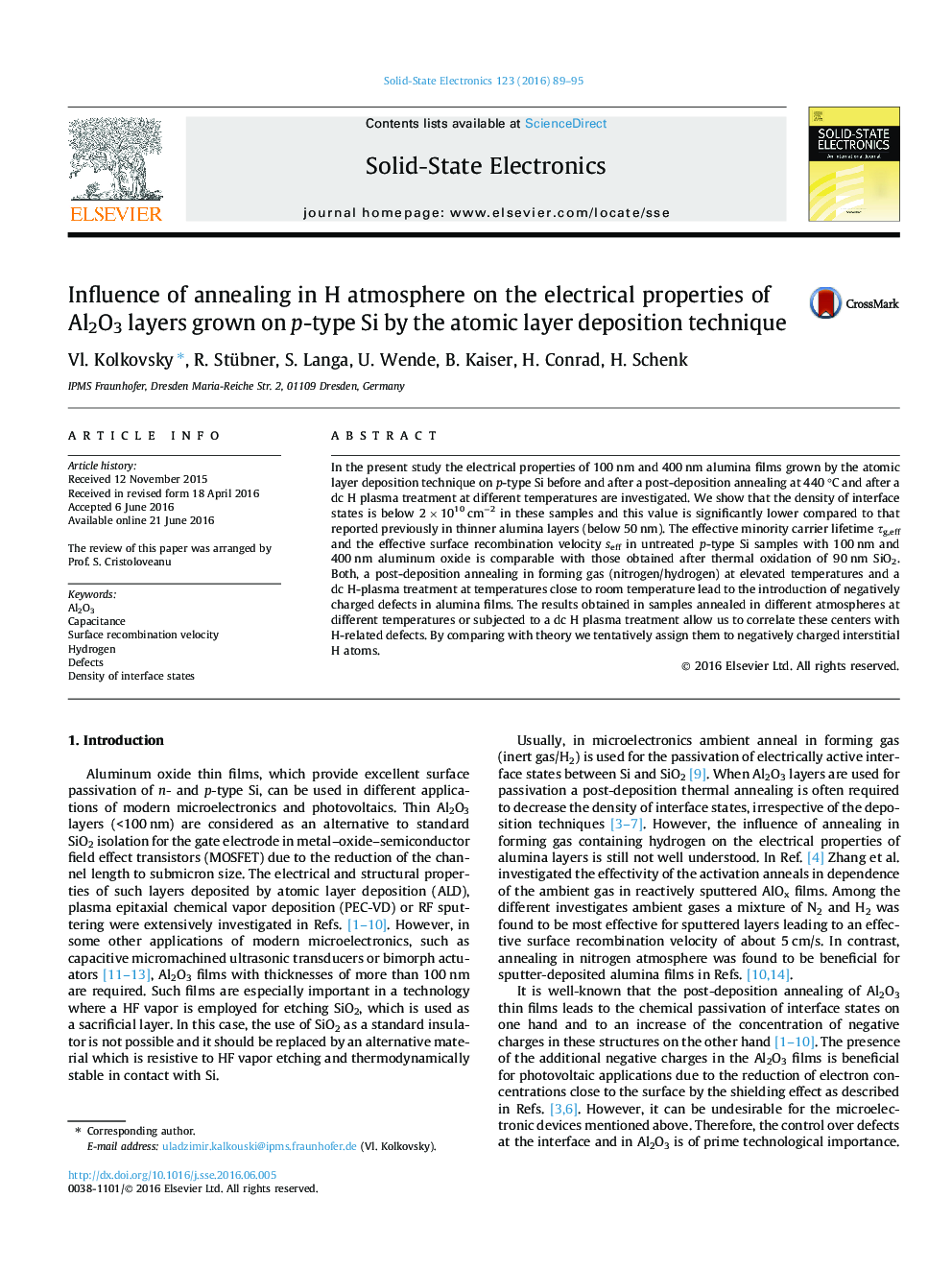| Article ID | Journal | Published Year | Pages | File Type |
|---|---|---|---|---|
| 746175 | Solid-State Electronics | 2016 | 7 Pages |
•Dit is below 2 × 1010 cm−2 in samples with 100 nm and 400 nm alumina films.•Dit is higher in samples with thinner alumina layers.•seff and τg,eff are comparable with those observed in samples with SiO2.•Annealing in H atmosphere shifts Ufb towards higher voltages.•The shift of Ufb appears due to negatively charged H-related defects in alumina.
In the present study the electrical properties of 100 nm and 400 nm alumina films grown by the atomic layer deposition technique on p-type Si before and after a post-deposition annealing at 440 °C and after a dc H plasma treatment at different temperatures are investigated. We show that the density of interface states is below 2 × 1010 cm−2 in these samples and this value is significantly lower compared to that reported previously in thinner alumina layers (below 50 nm). The effective minority carrier lifetime τg,eff and the effective surface recombination velocity seff in untreated p-type Si samples with 100 nm and 400 nm aluminum oxide is comparable with those obtained after thermal oxidation of 90 nm SiO2. Both, a post-deposition annealing in forming gas (nitrogen/hydrogen) at elevated temperatures and a dc H-plasma treatment at temperatures close to room temperature lead to the introduction of negatively charged defects in alumina films. The results obtained in samples annealed in different atmospheres at different temperatures or subjected to a dc H plasma treatment allow us to correlate these centers with H-related defects. By comparing with theory we tentatively assign them to negatively charged interstitial H atoms.
